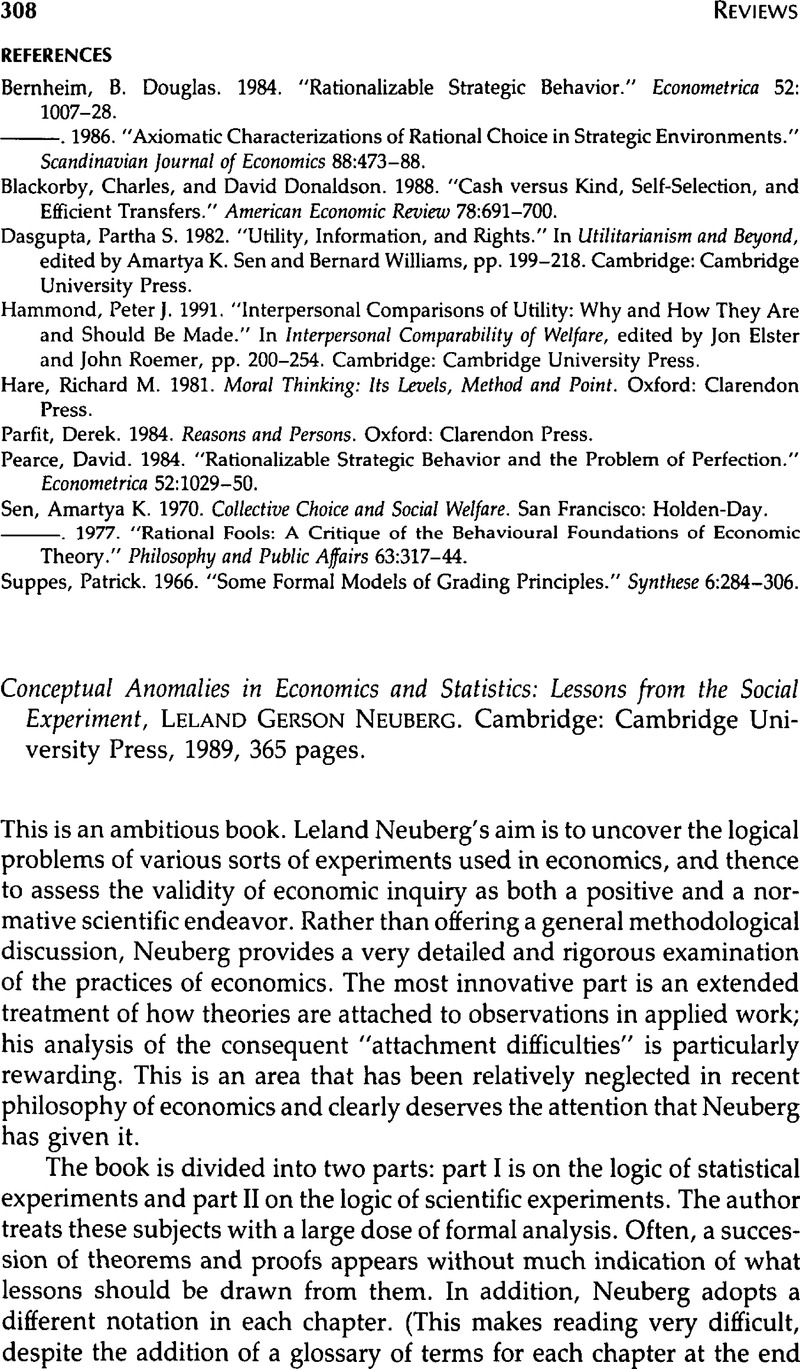No CrossRef data available.
Article contents
Conceptual Anomalies in Economics and Statistics: Lessons from the Social Experiment, Leland Gerson Neuberg. Cambridge: Cambridge University Press, 1989, 365 pages.
Published online by Cambridge University Press: 05 December 2008
Abstract
An abstract is not available for this content so a preview has been provided. Please use the Get access link above for information on how to access this content.

- Type
- Reviews
- Information
- Copyright
- Copyright © Cambridge University Press 1991
References
REFERENCES
Cartwright, Nancy. 1989. Nature's Capacities and Their Measurement. Oxford: Clarendon Press.Google Scholar
Hacking, Ian. 1988. “Telepathy: Origins of Randomization in the Design of Experiments.” ISIS 79:427–51.CrossRefGoogle Scholar
Hausman, Daniel M. 1990. “Supply and Demand Explanations and Their Ceteris Paribus Clauses.” Review of Political Economy 2:168–87.CrossRefGoogle Scholar
Morgan, Mary S. 1990. The History of Econometric Ideas. Cambridge: Cambridge University Press.CrossRefGoogle Scholar


